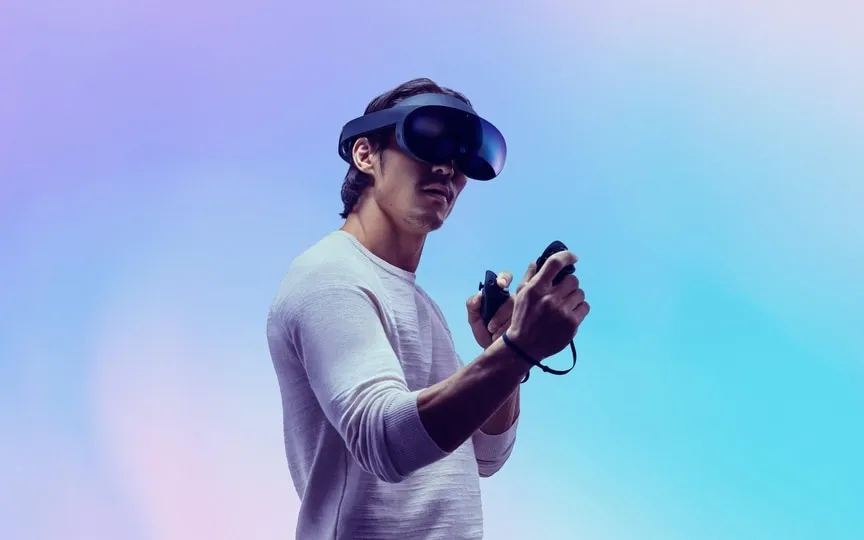Will Apple’s New Headset Revolutionize Virtual Reality?
Apple seems ready to introduce a highly anticipated headset that will bridge the gap between the virtual and physical worlds. This will also serve as a test for the company’s ability to make innovative devices popular, as previous attempts by other companies have failed to capture the public’s interest.
After years of speculation, the stage is set for a widely anticipated unveiling Monday at Apple’s annual developer conference in Cupertino, California, on a stage named after the company’s late founder Steve Jobs. Apple is also likely to use the event to show off its latest Macs, preview the next iPhone operating system and discuss its AI strategy.
But the star of the show is expected to be the glasses – possibly called “Reality Pro” according to media leaks – which could become another milestone in Apple’s tradition of bringing game-changing technology to market, although the company hasn’t always been the first. Who tried to make a certain device.
Apple’s history of achievement dates back to Jobs’s volatile first Mac in 1984—a tradition that continued with the iPod in 2001, the iPhone in 2007, the iPad in 2010, the Apple Watch in 2014, and the AirPods in 2016. .
But with a $3,000 price tag, Apple’s new headphones may also receive a lukewarm reception from all but the wealthiest tech enthusiasts.
If the new device turns out to be a niche product, it would leave Apple on the same hook as other big tech companies and startups that have tried to sell headphones or glasses with technology that thrusts people into artificial worlds or renders digital images with landscapes. and objects that are physically in front of them – a form known as “augmented reality”.
Apple’s glasses are expected to be stylishly designed and able to switch between fully virtual or augmented options, a combination sometimes known as “mixed reality.” This flexibility is sometimes called external reality, or XR for short.
Facebook founder Mark Zuckerberg has called these alternate 3D realities the “metaverse.” It’s a wacky concept that he tried to bring to the mainstream by renaming his social networking company Meta Platforms in 2021 and pouring billions of dollars into improving the virtual technology.
But the metaverse remains largely a digital ghost town, even though the Meta virtual reality headset, the Quest, remains the best-selling device in a category that has so far mostly attracted video game players looking for immersive experiences.
It seems likely that Apple executives will avoid referring to the metaverse, given the skepticism that quickly developed around the term when discussing the features of the company’s new headphones.
In recent years, Apple CEO Tim Cook has occasionally touted augmented reality as the next great leap in technology, with no specific timetable for when it will gain mass traction.
Cook, 62, said last September while speaking to students in Italy. “Like today, you wonder how people like me grew up without the Internet. You know, I think it can be that deep. And it’s not that deep overnight.”
The reaction to VR, AR and Mixed Reality has been decidedly modest so far. Even some of the tools that popularize the technology have been mocked with sarcasm, the most notable example being Google’s internet-connected glasses released more than a decade ago.
After Google co-founder Sergey Brin initially generated excitement around the device by demonstrating the early model’s “wow factor” with a skydiving stunt during a tech conference in San Francisco, consumers quickly turned to the product, which allowed its users to hide. . Take photos and videos. The backlash became so severe that people using the devices became known as “glass holes”, prompting Google to pull the product a few years after its release.
Microsoft also had limited success with HoloLens, a mixed-reality headset released in 2016, although the software maker insisted earlier this year that it remained committed to the technology.
Magic Leap, a startup that generated excitement with previews of mixed-reality technology that can conjure up the sight of a whale breaching a gym floor, had so much trouble marketing its first headset to consumers in 2018 that it has since shifted its focus to industrial use. and for healthcare use. and in an emergency.
Daniel Dies, Magic Leap’s chief transformation officer, said Apple’s glasses need to answer four main questions: “What can people do with it? How does this thing look and feel? Is it comfortable to use? And how much does it cost? Cost?”
Expectations that Apple’s glasses will sell for several thousand dollars have already lowered expectations for the product. While he expects Apple’s glasses to feature “jaw-dropping” technology, Wedbush Securities analyst Dan Ives said he expects the company to sell just 150,000 units in the device’s first year on the market — just a blip in the company’s portfolio. By comparison, Apple sells more than 200 million iPhones, its flagship product, each year. But the iPhone wasn’t an instant sensation, selling less than 12 million units in its first full year on the market.
Zuckerberg confirmed last week that the next Quest headset will retail for $500, an announcement four months before Meta Platform plans to unveil the latest device at its tech conference. .
Since 2016, annual shipments of virtual and augmented reality devices have averaged 8.6 million units, according to research firm CCS Insight. The company expects sales to remain muted this year, with sales expected to be around 11 million devices before gradually increasing to 67 million in 2026.
But these predictions were clearly made before it was known whether Apple might release a landscape-changing product.
“I would never trust Apple, especially in the consumer market and especially when it comes to finding killer apps and solutions,” said Magic Leap’s Diez. “If anyone wants to break into the consumer market early, I wouldn’t be surprised if it were Apple.”




